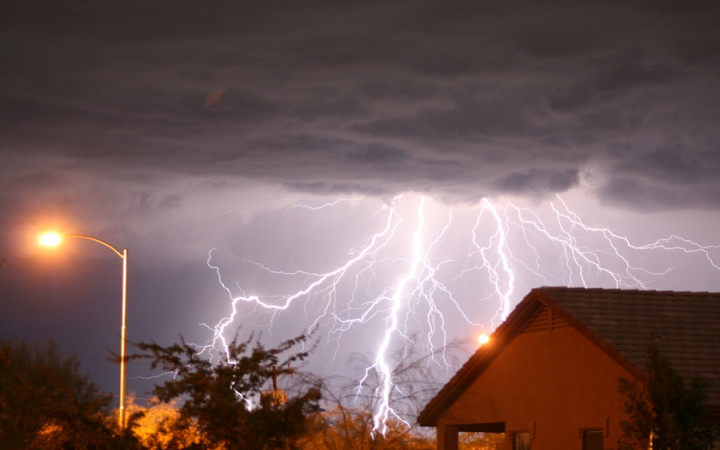Today’s Wonder of the Day was inspired by Coleman from AL. Coleman Wonders, “How does lightning form” Thanks for WONDERing with us, Coleman!
Do you like when it storms? Some storms can be quite peaceful, with a steady rain and gentle, rolling thunder. But sometimes storms can be scary—when the wind howls, the rain beats down, the thunder booms, and lightning bolts flash in the sky.
We've all seen and heard thunder and lightning in a big storm, but have you ever WONDERed where lightning comes from? Keep reading and find out!
When a thundercloud is way up in the atmosphere, the air is very cold. This causes the moisture in the cloud to freeze. These tiny bits of ice bump into each other as they roll around in the air, a bit like bumper cars.
Each collision creates an electric charge. Eventually, the cloud's electrical charges begin to separate. Positive charges, called protons, form at the top of the cloud, while negative charges, called electrons, settle at the bottom.
The Earth's surface has a positive charge. The positive charge concentrates around anything that sticks up, whether it's a skyscraper, a mountain, a tall tree, a fence, a lightning pole or a person standing in an empty field.
You've probably heard the expression “opposites attract," and this is definitely the case when it comes to lightning. Once enough electrons settle in the bottom of a cloud, the attraction from their negative charge and Earth's positive charge becomes too great and electrons flow toward the protons. The result is a zap of lightning.
If you've ever walked across carpet in wool socks and been shocked when you reached for a doorknob, you've already experienced the power of protons and electrons. Lightning works the same way.
Lightning flashes come in all different shapes and sizes. They carry different amounts of electrical currents. Two clouds of the same size can behave in very different ways. The amount of lightning they produce depends on a variety of factors, such as the cloud's electrical charge, how fast air is moving within the cloud, and how many ice crystals it contains.
Satellites have shown that, around the world, there are more than three million lightning flashes each day. That's about 40 flashes each second! In the United States, Florida and the Rocky Mountain region get the most lightning. Worldwide, people living in countries closest to the equator get to watch Mother Nature light up the skies more than those living in other parts of the globe.
Though beautiful, lightning is extremely dangerous. Lightning strikes kill approximately 2,000 people each year. Hundreds more survive, but many strike survivors have long term physical problems, and some have even lost their memory.
Roy Sullivan of Virginia holds the record as the person struck by lightning the most times. Roy has been struck seven times, and that's probably not a record you'll want to try to top.
The best place to be when lightning strikes is indoors. If you can't get to shelter, avoid standing near tall trees, poles, bodies of water, metal fences and bicycles. Avoid open areas like soccer fields or baseball diamonds.
Lightning facts
- A lightning flash is no more than an inch wide.
- The temperature of a lightning flash ishotter than the surface of the sun.
- A bolt of lightning moves at 62,000 miles per second.
- Lightning can strike twice in the same place. The flickering you see with certain bolts of lightning is caused by three or four strikes in the same location.




